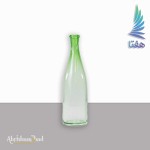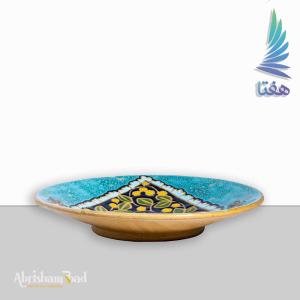Tabletop Vases Glass Enamel Iranian Ready For export at Best Price
- Iranian Tabletop Vases Glass Enamel, ready for export, features luxury designs admired worldwide.
- These high-quality vases are offered at competitive corporate prices, ensuring affordability for businesses.
- Each piece undergoes meticulous craftsmanship, including firing in a kiln at high temperatures between 750 to 850 degrees Celsius (1382 to 1562 degrees Fahrenheit).
- This process ensures a vibrant, glossy finish, making these vases a standout in any setting.
Introduction:
Iran proudly presents its exquisite collection of Tabletop Vases with Glass Enamel, ready for export to discerning customers worldwide. Renowned for their vibrant colors and intricate designs, these vases showcase the mastery of Persian artisans who have honed their skills over generations. Each piece is meticulously crafted, blending traditional techniques with contemporary aesthetics, ensuring that every vase is a unique work of art.
Iran, as a leading supplier, offers these high-quality enamel vases at competitive wholesale prices, making them accessible to global markets. With a commitment to excellence and authenticity, Iranian tabletop glass enamel vases stand out as both decorative and functional pieces, perfect for enhancing any interior space. Discover the beauty and heritage of Persian craftsmanship with these stunning enamel vases, available for export everywhere.
History and Origins:
The art of Persian vitreous enamel, known as Minakari, dates back thousands of years to the Achaemenid Empire, making it one of the oldest and most revered forms of decorative art in the region. This ancient craft has been passed down through generations, with each era contributing to its evolution and refinement. The term "Minakari" derives from the Persian word "Minoo," meaning heaven or paradise, a fitting description for the heavenly beauty that this art form imbues in its creations. Over the centuries, Minakari has been used to adorn a wide array of objects, from everyday items to ceremonial artifacts, reflecting the rich cultural tapestry of Persia.
Technique and Process:
The creation of Minakari is an intricate process that requires both artistic skill and technical expertise. The journey begins with shaping metal surfaces—typically copper, silver, or gold—into the desired form, whether it be jewelry, tiles, or decorative objects. The metal is meticulously cleaned and prepared to ensure the enamel adheres properly. Skilled artisans then apply various colored powdered glass to the metal using specialized brushes or spouts.
Each color is applied separately with the utmost precision, as the final result depends on the careful layering of different hues. The piece is fired in a kiln at high temperatures, usually between 750 to 850 degrees Celsius (1382 to 1562 degrees Fahrenheit). This firing process melts the powdered glass, fusing it with the metal to create a smooth, glossy, and vibrant surface. Multiple firings may be required to achieve the desired color intensity and effect, making each Minakari piece unique.
Design and Patterns:
Persian vitreous enamel is renowned for its intricate designs and vibrant colors. Traditional Minakari patterns often include floral motifs, geometric shapes, and calligraphy, reflecting the rich artistic heritage of Persian culture. These designs are meticulously crafted, with artisans paying close attention to detail to ensure each piece is a work of art. The use of bright and contrasting colors enhances the visual appeal, creating pieces that are not only beautiful but also culturally significant. The designs tell stories and convey the artistic sensibilities of Persian culture, making each piece a treasure.
Applications and Artistry:
Minakari is a versatile art form, finding expression in a wide variety of objects and items. Ornate jewelry pieces, such as bracelets, necklaces, and earrings, often showcase the exquisite beauty of Minakari. Additionally, decorative tiles and plates adorned with Minakari designs are used in architectural elements, such as walls and ceilings, adding a touch of opulence to palaces and religious buildings. This art form is also used to create luxurious home decor items, such as vases, bowls, and ornamental boxes, each piece a testament to the artisan's skill and creativity. The versatility of Minakari allows it to be used in both functional and decorative contexts, making it a cherished part of Persian culture.
Cultural Significance:
Minakari holds immense cultural significance in Persian art and craftsmanship. It symbolizes the exquisite creativity and attention to detail present in Persian culture. This craft has been passed down from one generation to another, with artisans continuing to practice and preserve this precious heritage. Minakari pieces are often used in ceremonial and religious contexts, highlighting their cultural and spiritual importance. The art form also plays a vital role in preserving Persian history and traditions, serving as a link between the past and the present. The continued practice of Minakari ensures that this rich cultural legacy will endure for generations to come.
Conclusion:
Persian vitreous enamel, or Minakari, stands as a testament to the artistic excellence of ancient Persia. Its timeless beauty, intricate patterns, and vibrant colors have made it an enduring symbol of Persian culture. As a cherished art form, Minakari continues to inspire awe and admiration, ensuring that its rich legacy will endure for generations to come. The meticulous craftsmanship and artistic expression found in each piece of Minakari make it a true reflection of Persian heritage, a celebration of beauty, and a preservation of tradition.
Add your review
Your email address will not be published. Required fields are marked *
Please login to write review!
Looks like there are no reviews yet.

by Abrisham Road
Inspection group .co

Hafta House
- Store rating
4.5
- Staff
40
- Offers
> 100
- Products
8













